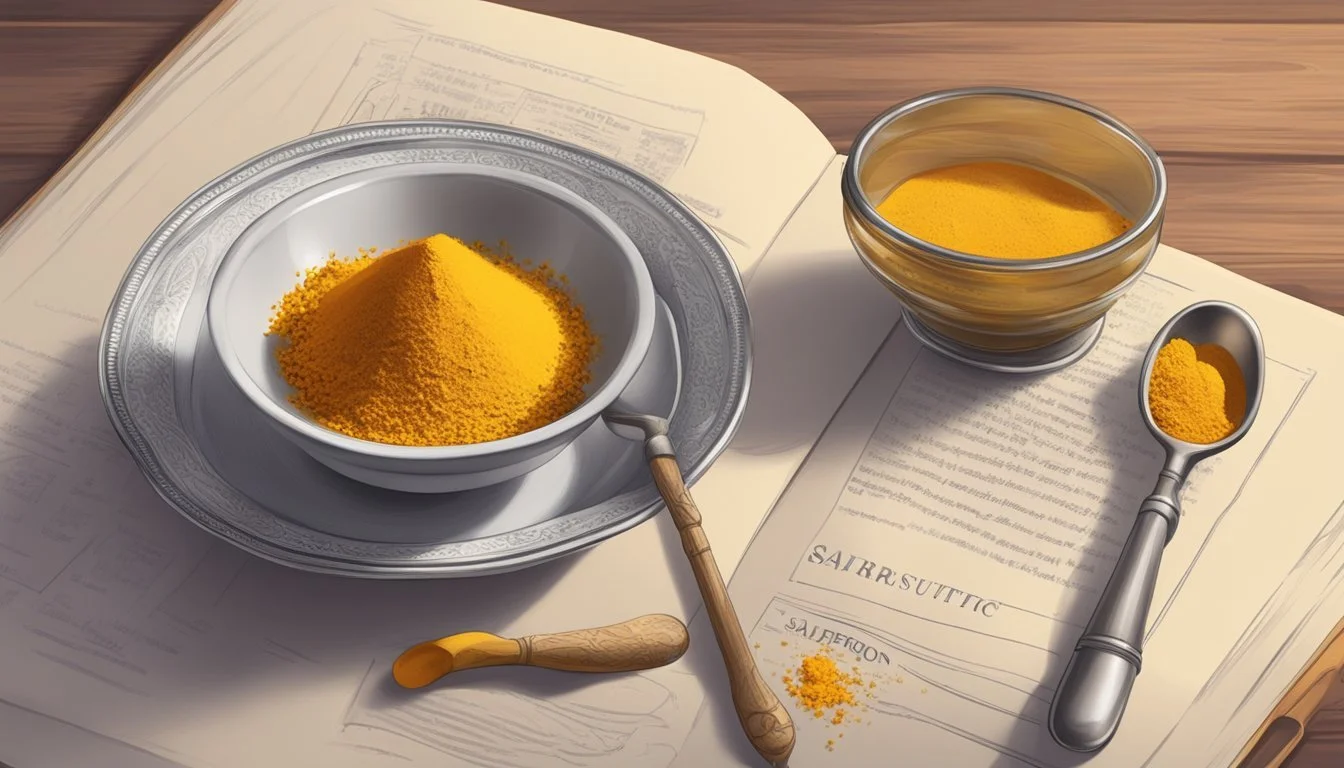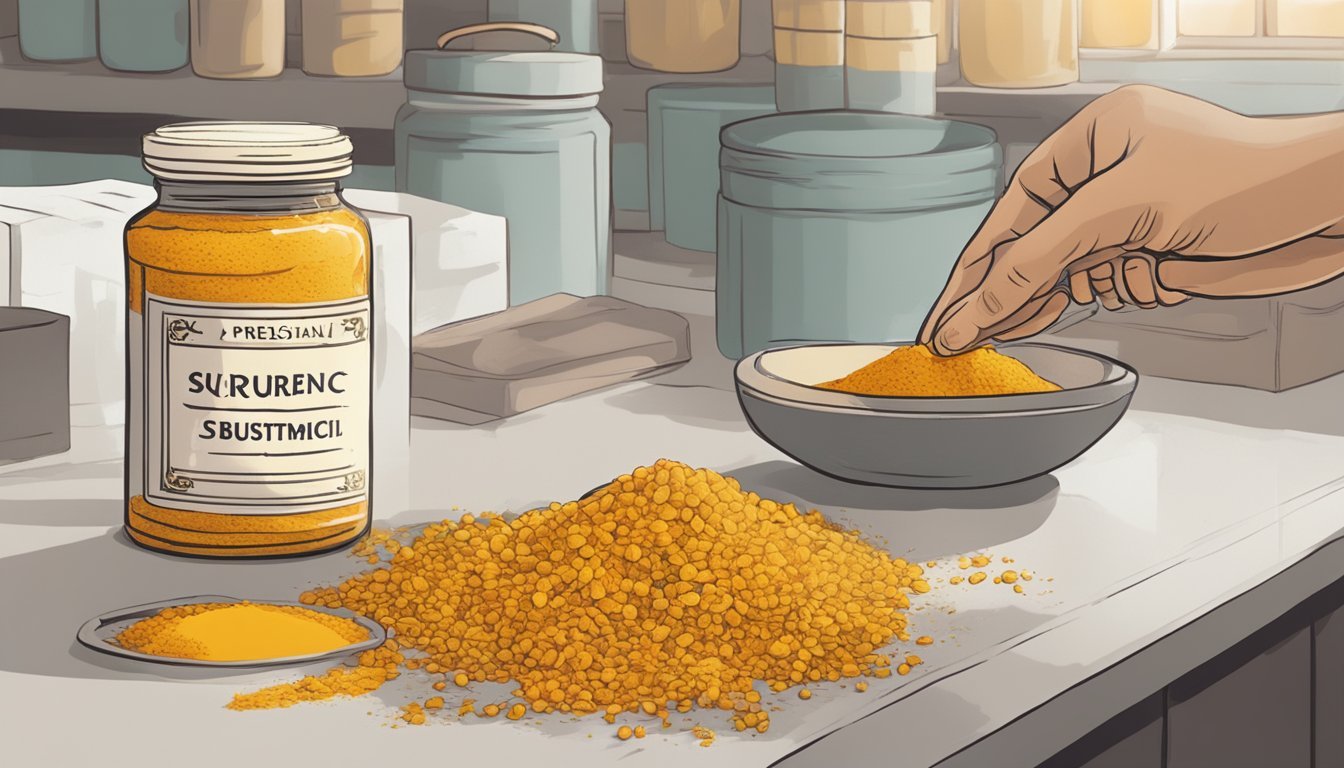How to Substitute Saffron for Turmeric
A Guide to Flavour and Color Alternatives
Saffron, known for its distinctive golden hue and subtle, complex flavor, is a prized spice in culinary traditions around the world. Due to its labor-intensive harvesting process, which involves handpicking threads from the crocus flower, saffron commands a high price, making it one of the most expensive spices by weight. Its unique characteristics make it a sought-after ingredient in dishes such as paella, risotto, and various soups and stews. Yet, the cost or lack of accessibility to saffron can prompt home cooks and chefs alike to seek alternatives that provide a similar color and taste profile to their recipes.
Turmeric, a spice hailing from the ginger family, emerges as a common saffron substitute due to its vibrant color and flavor notes. While turmeric offers an earthy undertone with peppery, slightly bitter qualities, it doesn't mirror saffron's flavor complexity entirely. Nevertheless, it serves as a suitable replacement in providing the signature yellow hue that saffron is famous for, particularly in rice dishes, curries, and other savory meals. When substituting turmeric for saffron, the amount used is important to consider; a small quantity can impart color without overwhelming the dish with the spice's bold flavor.
The incorporation of turmeric as a saffron substitute should be approached with attention to the dish's flavor balance. Although turmeric can stand in for saffron's visual appeal, it may alter the final taste profile of a recipe. Therefore, one must carefully adjust other spices in the dish to harmonize with turmeric's distinct properties. In this way, one can create a satisfying alternative option that maintains the essence of the original recipe while remaining accessible and cost-effective.
Understanding Saffron and Turmeric
When cooking, it is essential to appreciate the unique characteristics of saffron and turmeric, as they are distinct in flavor, color, and culinary role. Recognizing the profile of each spice ensures proper usage and substitution.
Profile of Saffron
Saffron, harvested from Crocus sativus, is an expensive spice revered for its unique flavor profile. It carries a distinctive earthy and floral aroma with a subtle but complex taste. Saffron threads, the stigma of the saffron crocus, are handpicked, contributing to their high cost. This spice imparts a beautiful golden hue to dishes, making it a sought-after ingredient in cuisines worldwide.
Flavor: Earthy, floral, subtle complexity
Color: Golden hue
Common Uses: Paella, Risotto, Bouillabaisse
Profile of Turmeric
Turmeric, on the other hand, derives from a rhizome and belongs to the ginger family. It offers an earthy flavor with a characteristically bitter and pungent taste. While less expensive, turmeric is versatile and widely used, not just for its flavor but also for its health benefits and vibrant yellow color. Found in powdered form, it is a staple in curry powders and gives dishes a rich color distinctly different from that of saffron.
Flavor: Earthy, bitter, pungent
Color: Vibrant yellow
Common Uses: Curry, Dyes, Medicinal_USES
Both spices can be pivotal ingredients in a recipe, where saffron is often used for its delicate flavor and turmeric for its bold taste and coloring properties.
The Role in Recipes
In determining the roles of saffron and turmeric in recipes, one must consider both their distinct flavor profiles and their coloring capabilities, which are essential to many dishes.
Common Uses of Saffron
Saffron, with its unique fragrant aroma and subtly sweet taste, is often used sparingly due to its high cost. It graces traditional dishes such as paella and risotto, where it imparts its signature golden hue and distinct flavor. In cooking, the threads are typically steeped in hot water to extract their essence before being added to recipes.
Rice dishes: Saffron is a key ingredient in many rice dishes around the world, infusing the grains with a warm, yellow color and a complex taste.
Paella: Known for its vibrant color and rich flavor, saffron is irreplaceable in this iconic Spanish dish.
Common Uses of Turmeric
Turmeric, known for its earthy bitterness and strong coloring power, is a cornerstone in curries and mustards. It is less expensive and more accessible than saffron, making it a popular choice as a flavoring and coloring agent in various dishes.
Curry powder: Turmeric is a fundamental component of curry powder, contributing to its distinct yellow color and warm flavor profile.
Rice and soups: As a versatile spice, turmeric adds depth and color to an array of foods, from rice dishes to soups.
Considering the Flavor Profile
When substituting saffron for turmeric, understanding the distinct flavor profiles of each spice is necessary to achieve the desired taste outcome in a dish.
Analyzing Saffron's Sensory Elements
Saffron, often labeled as the most expensive spice in the world, provides a subtle and complex flavor profile. Its taste can be described as slightly sweet with floral notes, imparting a unique aroma and a trademark color to dishes. In terms of flavor, saffron brings a metallic hint with earthy and nutty undertones, which can be significant in culinary applications where saffron is the key ingredient.
Key Taste Qualities of Saffron:
Subtle sweetness
Floral aroma
Earthy undertones
Analyzing Turmeric's Sensory Elements
Turmeric, on the other hand, derives from a rhizome and is commonly used not only as a spice but also as a coloring agent. Its flavor is bold and pronounced, with an earthy essence and a slightly bitter and peppery taste. This distinct profile makes turmeric a staple in many curry powders and a variety of dishes across different cuisines.
Key Taste Qualities of Turmeric:
Bold earthiness
Slight bitterness
Peppery notes
When swapping saffron for turmeric in recipes, chefs should consider how the robust, earthy flavor of turmeric might alter the intended taste and whether this change aligns with the culinary goals of the dish.
Choosing an Appropriate Substitute
When selecting a saffron substitute, one should consider the flavor profile and color imparted by the original spice. Finding the right alternative is essential for maintaining the integrity of a dish.
Top Saffron Substitutes
Saffron is a unique and expensive spice known for its distinct flavor and rich golden hue. However, there are several options one can use as a stand-in:
Turmeric: With its brilliant yellow color, turmeric serves as a coloring agent much like saffron, although its flavor is earthier and more pungent.
Safflower: Also known as “false saffron,” safflower provides a similar color to dishes, but the flavor is much milder, so it's best used in recipes where saffron's taste is not the star.
Annatto: Derived from achiote seeds, annatto offers a vibrant color and can be used as a food coloring, though its flavor is slightly sweet and peppery.
Marigold Flowers: These can mimic saffron’s color, giving a golden tone to food. However, marigolds bring a more subtle flavor compared to saffron.
Substitute Color Similarity Flavor Similarity Turmeric High Medium Safflower High Low Annatto High Low-Medium Marigold Flowers Medium-High Low
Factors for Substitution
When opting for a saffron substitute in a recipe, it is crucial to assess the following:
Taste: Saffron has a distinctive delicate, floral flavor, so one must choose an alternative that will either approximate or complement the original taste without overwhelming other ingredients.
Color: As a renowned coloring agent, saffron gives a rich golden-yellow hue to dishes, which is a characteristic that should be matched by the substitute.
Quantity: The substitute's intensity could vary; for example, using turmeric, it is advisable to start with less than what the recipe requires for saffron (typically half a teaspoon to replace one teaspoon of saffron) and adjust according to taste and color.
Compatibility with the Recipe: Each alternative brings its own flavor profile, so one should consider how it interacts with the other components of the dish.
Practical Applications in Cooking
When substituting saffron for turmeric, one must consider the distinct flavors and colors each spice contributes to a dish. Saffron offers a delicate, floral taste and a vibrant golden hue, while turmeric provides a warm, earthy flavor and a similar yellow coloration.
Incorporating Substitutes in Soups and Stews
In soups and stews, saffron's subtle flavor is ideal for enhancing the existing blend of ingredients without overpowering them. To replace turmeric with saffron, it is recommended to start with a small pinch of saffron threads—about the tip of a knife—as it is much stronger than turmeric. These threads should be steeped in a tablespoon of warm water before being added to the dish to fully release their flavor and color.
Examples of effective applications include:
Lentil soup: Incorporate a pinch of saffron instead of turmeric for an aromatic twist.
Chicken stew: Add saffron for complexity and a touch of elegance to hearty recipes.
Incorporating Substitutes in Rice and Curry Dishes
Rice and curry dishes often rely on turmeric for color and a subtle flavor foundation. When replacing turmeric with saffron as a substitute, the key is to achieve a balance where saffron neither overwhelms the dish nor fades into the background.
For best results consider the following:
Paella: Use saffron to attain the signature yellow of the rice and introduce a traditional flavor profile.
Biryani: A small amount of saffron can be mixed with the rice for an authentic and aromatic presence.
To infuse saffron in rice dishes:
Soak saffron threads in hot water for 10 minutes.
Stir the infusion into the rice before cooking it to distribute the color evenly.
For curry dishes, take advantage of saffron's affinity with cream-based sauces or marinades to enhance both the presentation and taste. A light hand is critical when measuring to avoid a bitter aftertaste–generally, a few threads are sufficient.
Additional Considerations
When substituting saffron with turmeric, understanding sourcing, availability, and cost considerations ensures a seamless adjustment in recipes.
Sourcing and Availability
Turmeric, an alternative to saffron, is readily available in most grocery stores, making it an accessible option for consumers. Unlike saffron which can be scarce, turmeric is a staple spice in many cuisines and can therefore be sourced with ease.
Cost and Quantity Adjustments
Saffron stands as one of the most expensive spices due to its labor-intensive harvesting process. In contrast, turmeric is significantly more affordable. When substituting, adjustments are necessary, as turmeric is more potent. Typically, for every teaspoon of saffron, only a 1/4 teaspoon of turmeric should be used to avoid overpowering the dish.






